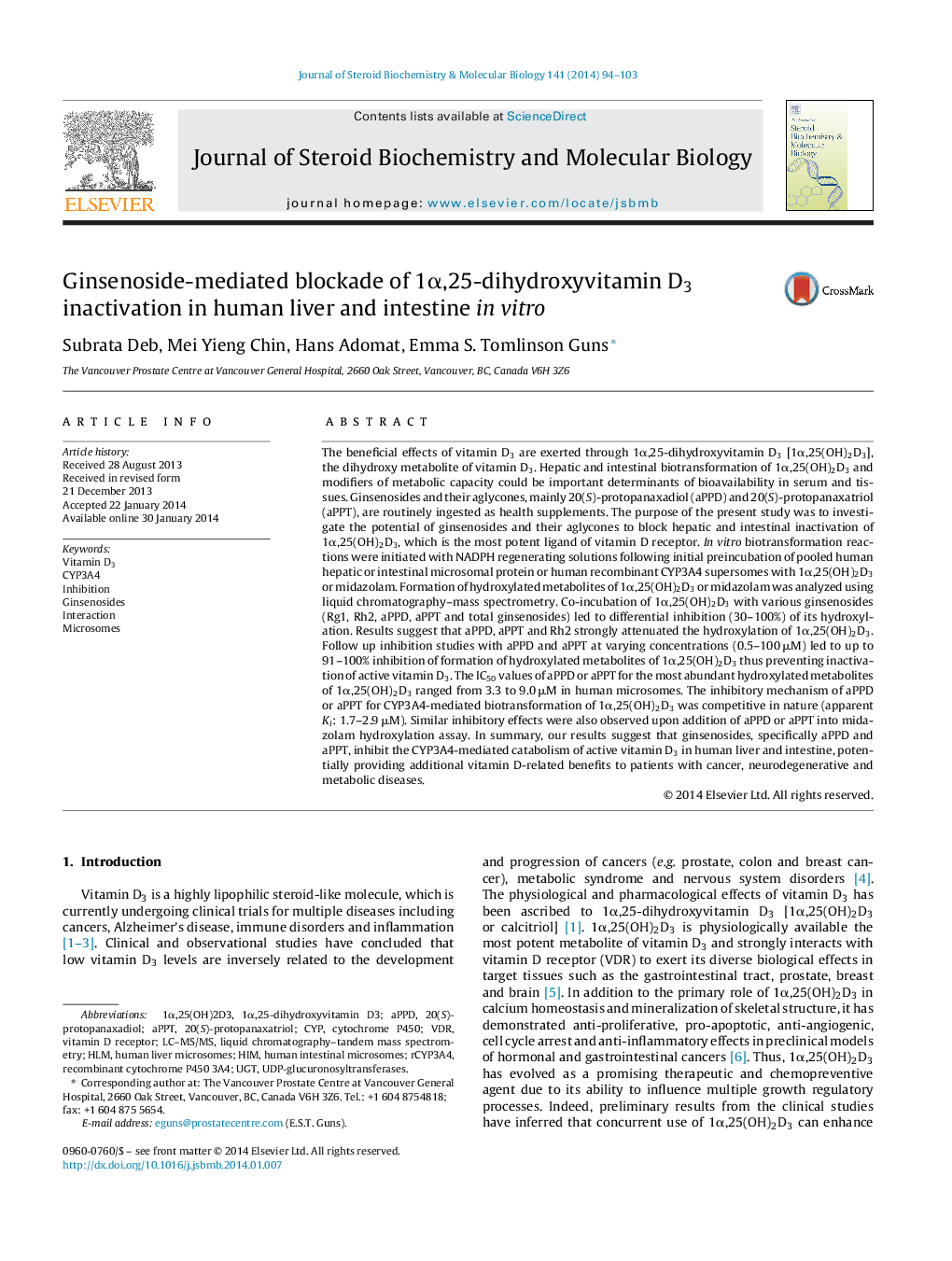| کد مقاله | کد نشریه | سال انتشار | مقاله انگلیسی | نسخه تمام متن |
|---|---|---|---|---|
| 1991437 | 1541009 | 2014 | 10 صفحه PDF | دانلود رایگان |

• Vitamin D and ginsenosides have common disease targets, e.g. cancer, metabolic syndrome and neurodegenerative diseases.
• Ginsenosides attenuate human CYP3A4-mediated inactivation of 1α,25-dihydroxyvitamin D3.
• Typical CYP3A4 marker substrate activity, e.g. midazolam hydroxylation, is inhibited in vitro by ginsenosides.
• Potential synergistic pharmacological actions of ginsenoside and 1α,25(OH)2D3 combination.
• Possible additional bone-related benefits to individuals taking both ginsenosides and vitamin D.
The beneficial effects of vitamin D3 are exerted through 1α,25-dihydroxyvitamin D3 [1α,25(OH)2D3], the dihydroxy metabolite of vitamin D3. Hepatic and intestinal biotransformation of 1α,25(OH)2D3 and modifiers of metabolic capacity could be important determinants of bioavailability in serum and tissues. Ginsenosides and their aglycones, mainly 20(S)-protopanaxadiol (aPPD) and 20(S)-protopanaxatriol (aPPT), are routinely ingested as health supplements. The purpose of the present study was to investigate the potential of ginsenosides and their aglycones to block hepatic and intestinal inactivation of 1α,25(OH)2D3, which is the most potent ligand of vitamin D receptor. In vitro biotransformation reactions were initiated with NADPH regenerating solutions following initial preincubation of pooled human hepatic or intestinal microsomal protein or human recombinant CYP3A4 supersomes with 1α,25(OH)2D3 or midazolam. Formation of hydroxylated metabolites of 1α,25(OH)2D3 or midazolam was analyzed using liquid chromatography–mass spectrometry. Co-incubation of 1α,25(OH)2D3 with various ginsenosides (Rg1, Rh2, aPPD, aPPT and total ginsenosides) led to differential inhibition (30–100%) of its hydroxylation. Results suggest that aPPD, aPPT and Rh2 strongly attenuated the hydroxylation of 1α,25(OH)2D3. Follow up inhibition studies with aPPD and aPPT at varying concentrations (0.5–100 μM) led to up to 91–100% inhibition of formation of hydroxylated metabolites of 1α,25(OH)2D3 thus preventing inactivation of active vitamin D3. The IC50 values of aPPD or aPPT for the most abundant hydroxylated metabolites of 1α,25(OH)2D3 ranged from 3.3 to 9.0 μM in human microsomes. The inhibitory mechanism of aPPD or aPPT for CYP3A4-mediated biotransformation of 1α,25(OH)2D3 was competitive in nature (apparent Ki: 1.7–2.9 μM). Similar inhibitory effects were also observed upon addition of aPPD or aPPT into midazolam hydroxylation assay. In summary, our results suggest that ginsenosides, specifically aPPD and aPPT, inhibit the CYP3A4-mediated catabolism of active vitamin D3 in human liver and intestine, potentially providing additional vitamin D-related benefits to patients with cancer, neurodegenerative and metabolic diseases.
Journal: The Journal of Steroid Biochemistry and Molecular Biology - Volume 141, May 2014, Pages 94–103